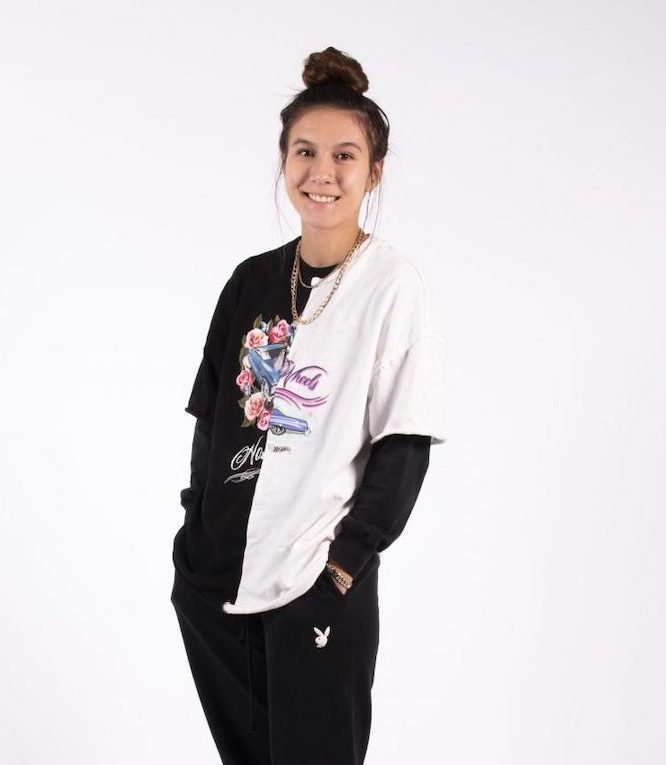Gender norms in fashion have come full circle
November 19, 2021
Harry Styles and the earliest warriors have the same stylist.
Styles made headlines in 2020, but not for his music. Styles appeared on the cover of Vogue wearing a dress. Being the first man to ever appear on the magazine cover in a dress. Critics argued that it was inappropriate for a man to wear a dress and that society needs to ¨bring back manly men.¨
Arguably some of the most ¨manly men¨ in history wore skirts and dresses.
The fashion industry has been through many changes throughout history, evolving gender expectations.
The first Aztecs would weave skirts to fight in since it was an easier pattern and believed it gave the warriors more maneuverability. Greek philosophers are famed for the toga, which eventually spread to the Romans who used them as a symbol of social status.
There was one activity that everyone had to wear pants for, no matter the gender: Riding horses.
The idea that pants were masculine started as soon as horses began to be used for military purposes. For centuries armies only allowed men to fight, making warriors a strictly masculine position.
However during Renaissance-era Europe, it was socially unacceptable to go out of the house without a skirt, trousers were simply too revealing. As tailoring evolved, more men started wearing pants as it grew to a symbol of masculinity.
After the 19th century, pants became the primary clothing option for young boys who carried the fashion into adulthood.
Throughout that time, women stayed with the fashion of only wearing long skirts and dresses. But as the 19th century progressed, Elizabeth Smith Miller created a version of the pants that women wear today, bloomers.
Though those pants faced much backlash, with critics saying they were ¨inappropriate¨ and ¨not feminine enough.¨ The bloomers faded after a few years and women did not wear pants again until WWI.
During WWI and WWII there was a large boom in women wearing trousers. For many of the women, wartime was the only time they ever worked. The long fabric of the skirts and dresses they usually wore were a safety hazard. After the war, pants were still worn by women, but only in leisure situations.
Still, dresses and skirts still remained the primary choice until the ´60s and ´70s. By the ´60s the influence of the women’s rights movement spread into fashion when many women made the switch from skirts to pants for everyday wear.
Women were not the only ones who made a fashion statement in the ´60s. A clipping from a German newspaper in 1967 had a picture of young men in skirts with the caption, ¨The rage in Germany is skirts on fellas (don’t knock it girls, the Romans wore ´em and looked quite groovy.)¨
In European countries, many boys started returning back to their roots and wore skirts. This fad slowly died after the ´70s for the general public, but celebrities continue to defy the gendered clothing of the day.
Many iconic musical artists such as David Bowie and Kurt Cobain wore dresses on the cover of magazines and at shows.
“I like to wear dresses because they’re comfortable. Men wearing dresses isn’t controversial,” Cobain said in a 1993 interview with, The Face.
The biggest controversy as of late has been Harry Styles’ photo shoot with Vogue. Styles´ fashion has always had a feminine influence, many modern menswear designs do.
Arianna Likouris is a fashion designer for Macy’s private label in New York City. She has worked in the fashion industry for the last four years.
¨When we have to create concepts a lot of the patterns we use on menswear were taken from our women’s designs,¨ Likouris said. ¨Menswear trends have been influenced by women´s fashion for years.¨
Men’s everyday wear and high fashion are both getting a makeover. Many everyday trends are inspired by runway fashion. Androgynous clothing is no different.
¨A lot of runway brands are starting to mix men’s and women´s fashion. Usually, there is one fashion week and it’s just womenswear shows. Then there is a men’s fashion week with menswear,¨ Likouris said. ¨Now there are shows with both men and women’s wear and honestly, the lines are so blurred you can´t tell. They really want to show anyone can wear whatever they want.¨
Fashion is a way of self-expression. Gender norms in fashion have changed throughout the years, the normalities have switched due to what was comfortable and most accessible.
¨




